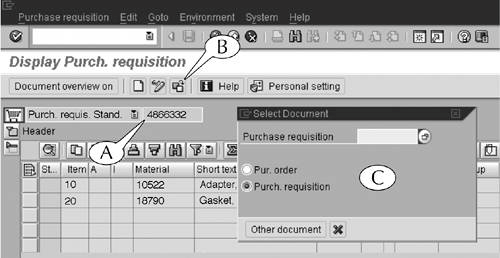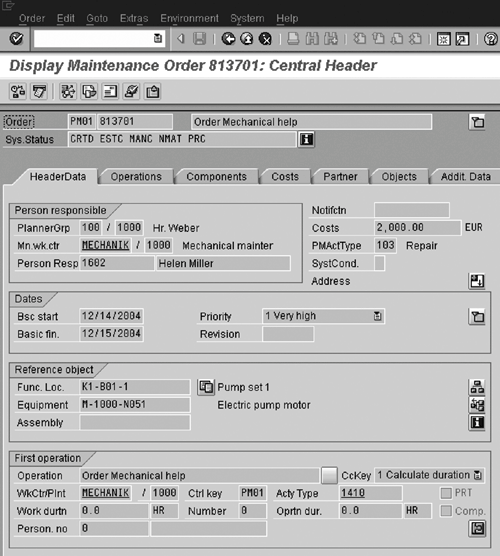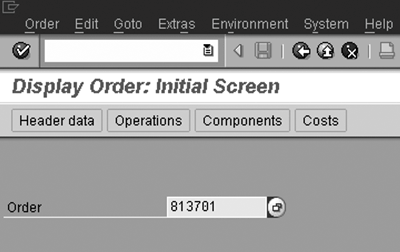Transaction Type 1: Displaying an Object
| This first transaction type simply displays the entire database record of a single object. To execute it, you must identify only that object to the system, nothing more. Consequently, the initial screens for this type of transaction usually contains only a single data entry field for the object's code (Figure C.1). You enter it there, then hit the Enter key on your keyboard to execute the transaction. Figure C.1. The initial screen for displaying a work order contains one data field, in which you enter the order number.
The initial screens for displaying purchase requisitions and orders represent a minor variant to this generalization that you might see in some display transactions. When you navigate to the initial screens of these transactions, the system automatically displays the data for the last purchase requisition or order that you worked (Figure C.2). The code for this object appears at the top of the screen (A). Figure C.2. The initial screen for displaying a purchase requisition or order automatically shows the last requisition or order that you worked. You can change that display through the Select Document popup screen. If this is not the object of immediate interest to you, you can change the display by clicking the Other requisition or Other order button (B) in the application toolbar. This action calls up the Select Document popup screen (C), on which you enter the correct object code (and search for it, if necessary). The output screens for this transaction type contain large volumes of data. Consequently, the data are usually distributed in multiple field areas, which you can view by scrolling down the length of the output screens, and multiple subscreens, which you can view by clicking their respective tabs (Figure C.3). The data are displayed in gray, read-only data fields, and you cannot alter or customize the output in any way. Figure C.3. The output screen for a display of a work order is called the Central Header screen. It contains multiple tabbed subscreens and field areas for holding the great volume of data that is recorded for this object. |
EAN: 2147483647
Pages: 132
